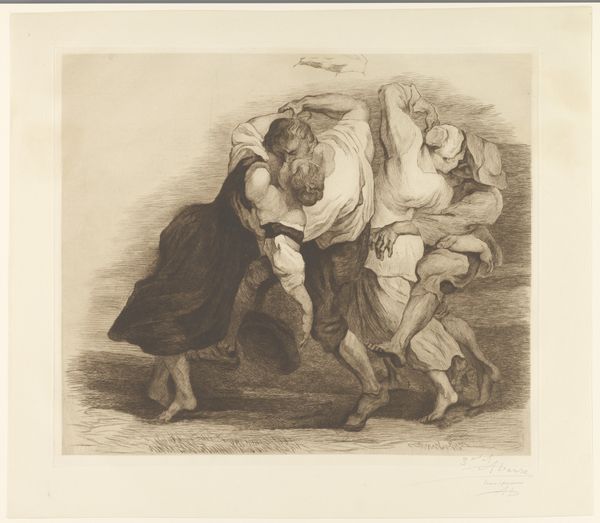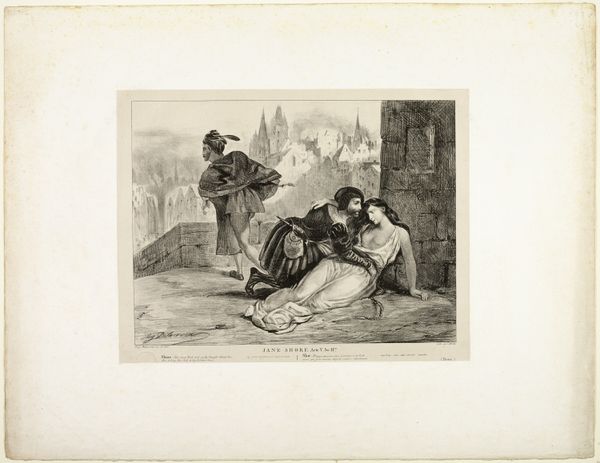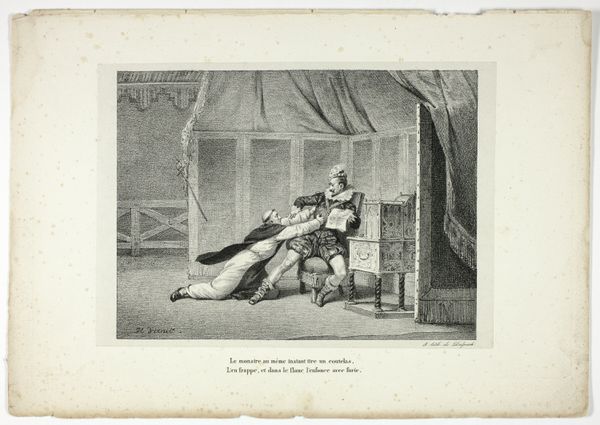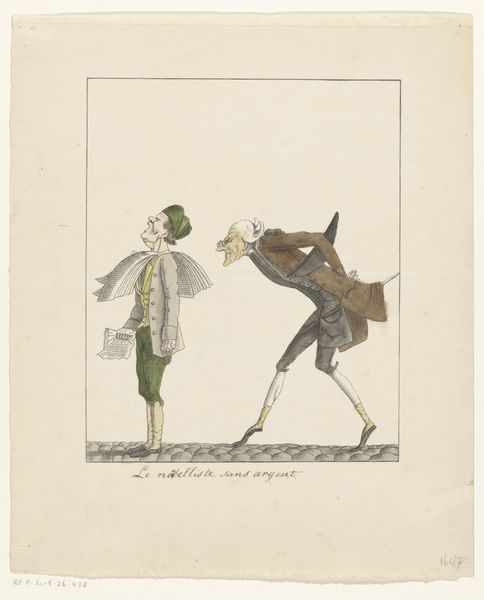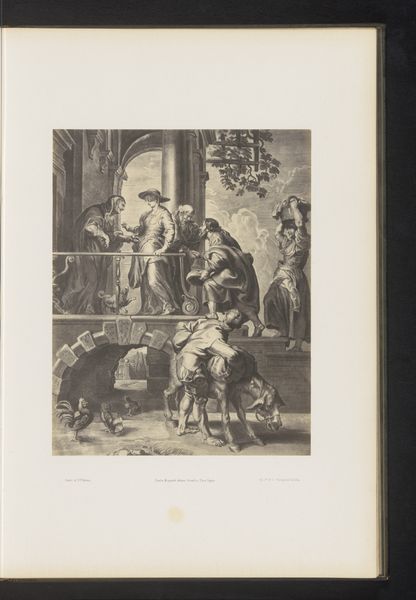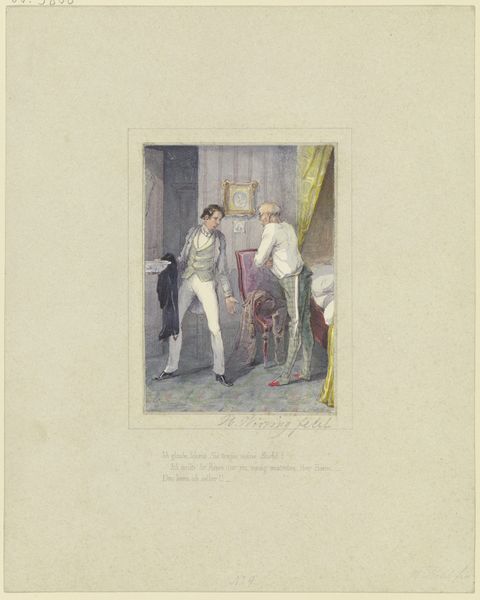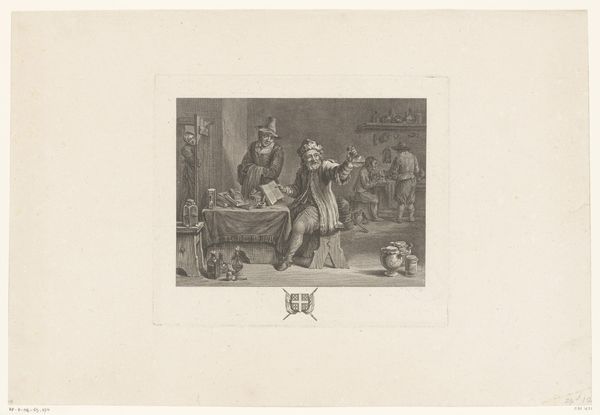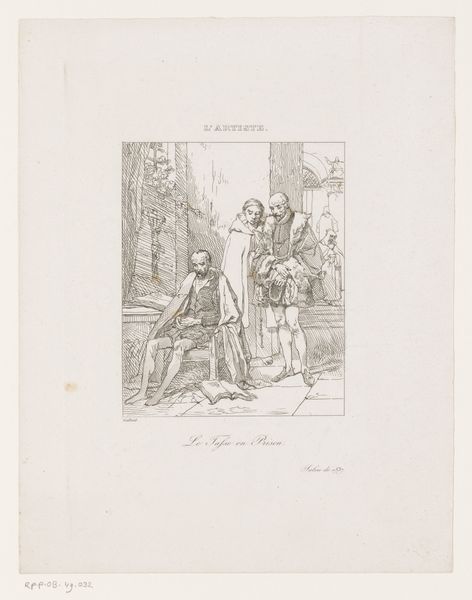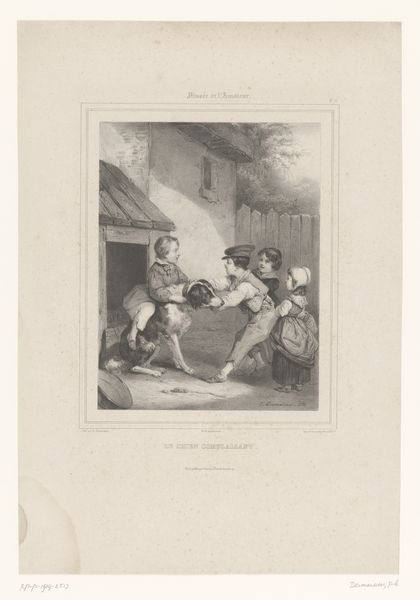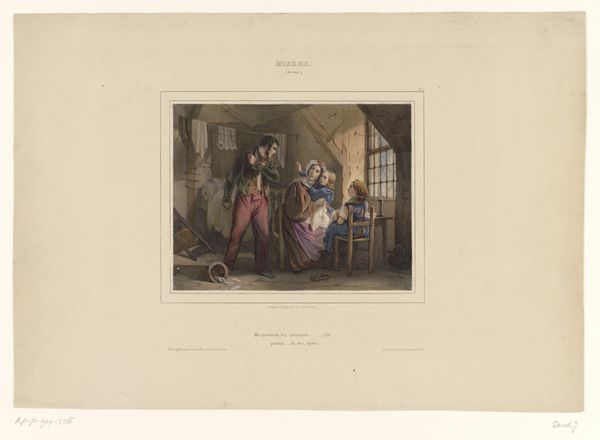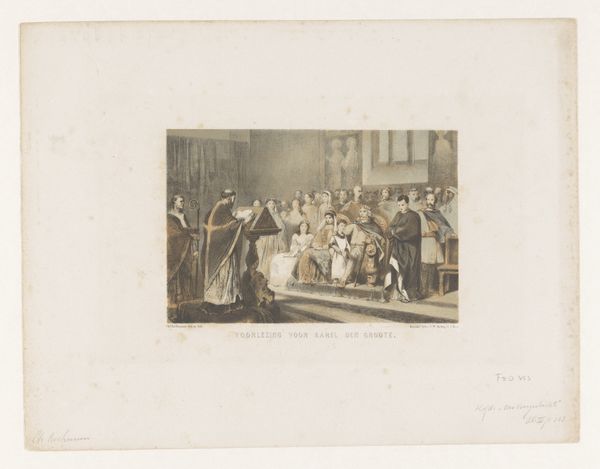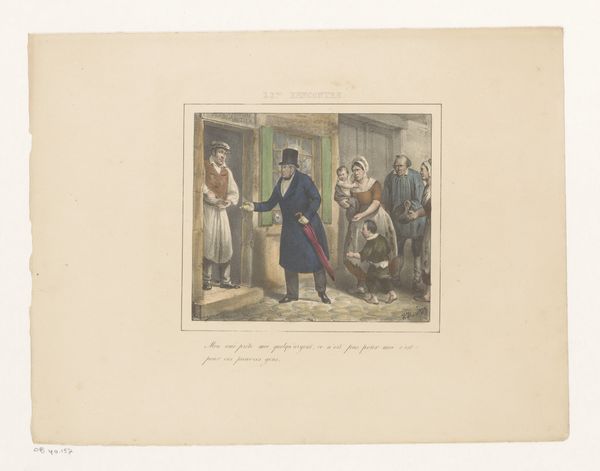
drawing, watercolor
#
portrait
#
drawing
#
caricature
#
watercolor
#
romanticism
#
watercolour illustration
Dimensions: height 262 mm, width mm
Copyright: Rijks Museum: Open Domain
Curator: Here we have Jules-Joseph-Guillaume Bourdet’s 1836 caricature, “Karikatuur van een zingende markies,” or “Caricature of a Singing Marquis,” rendered in watercolor and drawing. Editor: Immediately, I’m struck by the energy. The stark contrast between the crisp lines of the central figure and the muted background amplifies the Marquis' flamboyant gesture and strained facial expression. Curator: Indeed. The artist uses Romantic-era aesthetics to cleverly critique the social elites of the period. Bourdet uses his skills as a draughtsman to call into question ideas about class and taste. Editor: I note the theatricality. The artist uses the line to suggest dynamism, focusing on the figure in the foreground and making subtle allusions to characters behind the main subject. Curator: He seems trapped, perhaps confined by both social expectation and, literally, by these two figures who seem to restrain him as the public behind looks on. The open mouth, contorted brow… the painting, while comic, feels deeply human. Editor: I think it's fair to say that Bourdet expertly deploys formal qualities like distortion and exaggeration to ridicule his subject. Consider the elongated limbs and theatrical pose contrasted with the more somber attire of the figures trying to hold him still. Curator: Precisely! It is that juxtaposition of individual performance against the weight of social constraint that elevates this caricature to a statement about the societal pressures imposed on people of a particular social status, highlighting the performative expectations linked to their identity. It subtly explores issues of control, public versus private selves. Editor: Considering the way Bourdet wields line and watercolor, one can really understand Romantic art’s concern with rendering a visceral sense of emotive impact. It’s very persuasive—this image succeeds in visually rendering the subject's internal state with great economy and effect. Curator: Reflecting on this piece, I find myself considering how historical power structures continue to inform contemporary expressions of identity. How far have we come from the society this print mocks? Editor: For me, this exploration reaffirms the value of studying formal elements in appreciating a work of art’s intent and lasting ability to resonate—line, color, form can often speak as loudly as context.
Comments
No comments
Be the first to comment and join the conversation on the ultimate creative platform.

